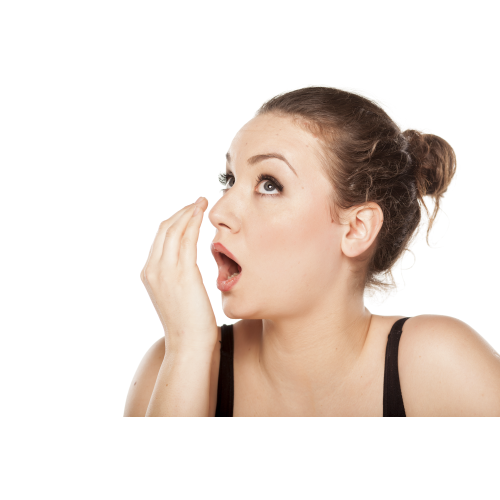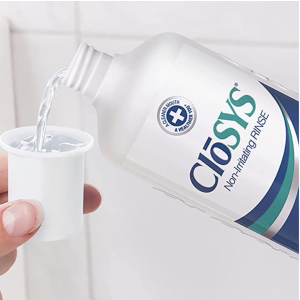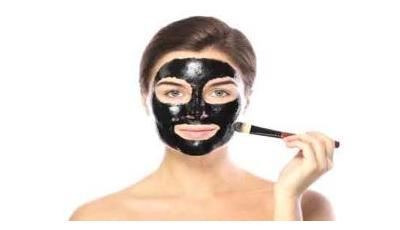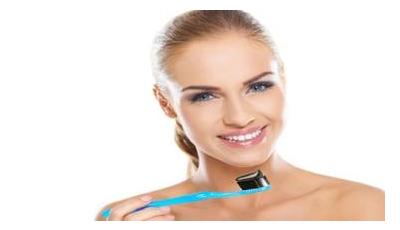Halitosis, or bad breath, is caused most commonly by bacteria living in your mouth. Unpleasant smells and tastes in your mouth can be reduced by rinsing with a mouthwash that eliminates these bacteria. Here is a review of the most effective types of mouthwashes for getting rid of odor-causing bacteria.

Causes of Bad Breath: Bacteria and Volatile Sulfur Compounds
The bad smell and taste you get in your mouth first thing in the morning or when you go a time without cleaning your teeth comes from strong-smelling chemicals called volatile sulfur compounds. These compounds are produced from certain types of bacteria as they process proteins and amino acids. When odor-causing bacteria become overpopulated, you can develop chronic bad breath or halitosis. Sinus or throat infections can also increase the prevalence of bad breath.
The way to treat halitosis is by eliminating the bacteria that produce volatile sulfur compounds, or by reducing their precursor molecules. Most mouthwashes for halitosis contain an antiseptic of some kind. Rinsing with these for one minute twice daily is usually sufficient.1
The bad smell and taste you get in your mouth first thing in the morning or when you go a time without cleaning your teeth comes from strong-smelling chemicals called volatile sulfur compounds. These compounds are produced from certain types of bacteria as they process proteins and amino acids. When odor-causing bacteria become overpopulated, you can develop chronic bad breath or halitosis. Sinus or throat infections can also increase the prevalence of bad breath.
The way to treat halitosis is by eliminating the bacteria that produce volatile sulfur compounds, or by reducing their precursor molecules. Most mouthwashes for halitosis contain an antiseptic of some kind. Rinsing with these for one minute twice daily is usually sufficient.1
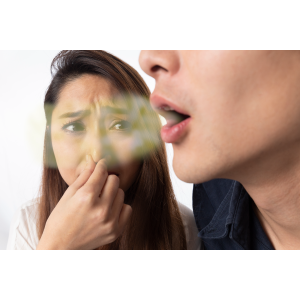

Chlorhexidine: Highly Effective but Potentially Irritating
Chlorhexidine (CHX) is considered to be the most effective ingredientfor eliminating oral bacteria. A powerful antiseptic, CHX works very well to prevent the buildup of plaque on your teeth and kill bacteria and yeast in your mouth. Because of its efficacy in reducing bad breath, CHX is the most commonly-used active ingredient in mouthwashes. It is usually at a concentration of around 0.2%, often in the form of chlorhexidine gluconate.2,3
As helpful as it is, CHX can have some adverse effects. You may notice a change in your ability to distinguish tastes after rinsing with a mouthwash containing CHX. Long-term use of CHX-containing mouthwashes can even stain your teeth and cause gum irritation.2 If you want to try a CXH mouthwash, you will need a prescription.
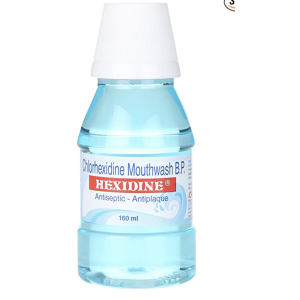

Chlorine dioxide (ClO2) is another effective ingredient for reducing odiferous compounds in your mouth. It is an oxidizing agent that can break down the amino acid precursors to volatile sulfur compounds. Mouthwash containing 0.1% ClO2 is effective in reducing bad breath for at least eight hours. It can also reduce the plaque on your teeth and the population of odor-causing bacteria in your mouth, potentially reducing your risk of gingivitis. Less harsh than chlorhexidine, ClO2 is a good alternative if you have a sensitive mouth or mouth sores.4,5
Recommended:Try a mouthwash for sensitive gums and teeth, CloSYS Ultra Sensitive Mouthwash with chlorine dioxide.

There are now a number of plant-derived antiseptics used in commercial mouthwashes. Like CHX and ClO2, these have antibacterial properties that reduce odor-causing bacteria in your mouth. Likewise, they can also reduce bacterial plaques and related decay in your teeth. One such herbal antiseptic you are likely already familiar with is menthol: this mint-derived compound gives mouthwashes a fresh, minty taste and cool feel as well.6
Other commonly-used herbal products include methyl salicylate (wintergreen), eucalyptol (from eucalyptus and other herbs), and thymol (from thyme). Other herbs that have been investigated and found to be helpful for bad breath include ela (true cardamom), Indian gooseberry, myrobalan, betel, pilu, and ajwain, among others.3,7 Drinking green tea can help your breath smell better as well.8

Oil Pulling
In Ayurvedic medicine, oil pulling has been used for centuries as a method for detoxification. The belief is that swishing a tablespoon of oil around in your mouth on an empty stomach can draw toxins from within your body, for better oral and overall health. So far, clinical trials have found no benefits of oil pulling in terms of removing poisons from your body. However, what they did find is that swishing oil in your mouth for 10-20 minutes can help with bad breath. Rice bran oil, sesame seed oil, and sunflower oil are good types to use.9,10
[1] Scully C. 2014. “Halitosis.” BMJ Clin Evid. Sep 18: 1305. https://www.ncbi.nlm.nih.gov/pubmed/25234037
[2] Shinada K, Ueno M, Konishi C, Takehara S, Yokoyama S, Kawaguchi Y. 2008. “A randomized double-blind crossover placebo-controlled clinical trial to assess the effects of a mouthwash containing chlorine dioxide on oral malodor.” Trials. Dec 9; 9:71. https://www.ncbi.nlm.nih.gov/pubmed/19068114/
[3] Mishra V, Shettar L, Bajaj M, Math AS. 2016. “Comparison of a commercially available herbal and 0.2% chlorhexidine mouthrinse for prevention of oral malodor: A clinical trial.” J Int Soc Prev Community Dent. Apr; 6(Suppl 1):S6-S11. https://www.ncbi.nlm.nih.gov/pmc/articles/PMC4863486/
[4] Shinada K, Ueno M, Konishi C, Takehara S, Yokoyama S, Zaitsu T, Ohnuki M, Wright FAC, Kawaguchi Y. 2010. “Effects of a mouthwash with a chlorine dioxide on oral malodor and salivary bacteria: a randomized placebo-controlled 7-day trial.” Trials. 11:14. https://www.ncbi.nlm.nih.gov/pmc/articles/PMC2831889/
[5] Aung EE, Ueno M, Zaitsu T, Furukawa S, Kawaguchi Y. 2015. “Effectiveness of three oral hygiene regimens on oral malodor reduction: a randomized clinical trial.” Trials. 16:31. https://www.ncbi.nlm.nih.gov/pmc/articles/PMC4324034/
[6] Erovic Ademovski S, Lingström P, Renvert S. 2016. “The effect of different mouth rinse products on intra-oral halitosis.” Int J Dent Hyg. May; 14(2):117-123. https://www.ncbi.nlm.nih.gov/pubmed/26031397
[7] Mamgain P, Kandwal A, Mamgain RK. 2016. “Comparative Evaluation of Triphala and Ela Decoction With 0.2% Chlorhexidine as Mouthwash in the Treatment of Plaque-Induced Gingivitis and Halitosis: A Randomized Controlled Clinical Trial.” J Evid Based Complementary Altern Med. Jul; 22(3):468-472. https://www.ncbi.nlm.nih.gov/pmc/articles/PMC5871163/
[8] Moghbel A, Farjzadeh A, Aghel N, Agheli H, Raisi N. 2012. “Evaluation of the effect of green tea extract on mouth bacterial activity in the presence of propylene glycol.” Jundishapur J Nat Pharm Prod. Spring; 7(2):56-60. https://www.ncbi.nlm.nih.gov/pubmed/24624155
[9] Asokan S, Kumar RS, Emmadi P, Raghuraman R, Sivakumar N. 2011. “Effect of oil pulling on halitosis and microorganisms causing halitosis: a randomized controlled pilot trial.” J Indian Soc Pedod Prev Dent. Apr-Jun; 29(2):90-94. https://www.ncbi.nlm.nih.gov/pubmed/21911944
[10] Sheikh FS, Iyer RR. 2016. “The effect of oil pulling with rice bran oil, sesame oil, and chlorhexidine mouth rinsing on halitosis among pregnant women: A comparative interventional study.” Indian J Dent Res. Sep-Oct; 27(5):508-512. http://www.ijdr.in/article.asp?issn=0970-9290;year=2016;volume=27;issue=5;spage=508;epage=512;aulast=Sheikh
-
Activated Charcoal Benefits
By Dr. AnnaDecember 20, 2021 -
Charcoal Teeth Whitening
By Dr. KarenDecember 26, 2021 -
Magic Mouthwash
By Dr. KarenDecember 26, 2021
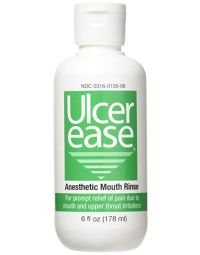
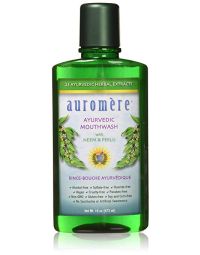
Search the blog
Article Categories
- All Articles (95)
- Rating Charts (1)
- Beauty & Skincare (17)
- FAQ (0)
- Hair Care (9)
- Health & Wellness (12)
- Anti-Aging (4)
- Kid's Health (0)
- Makeup (2)
- Men's Health (2)
- Oral Care (3)
- Sunscreen (7)
- Skin Tools & Treatments (10)
- Supplements (26)
- Videos (0)

